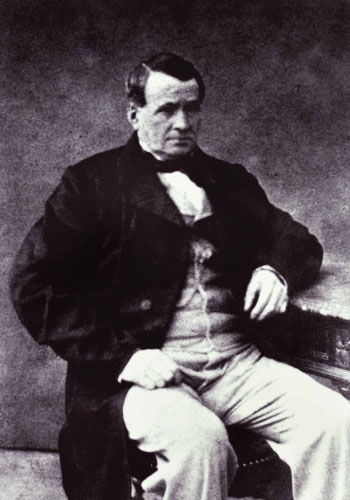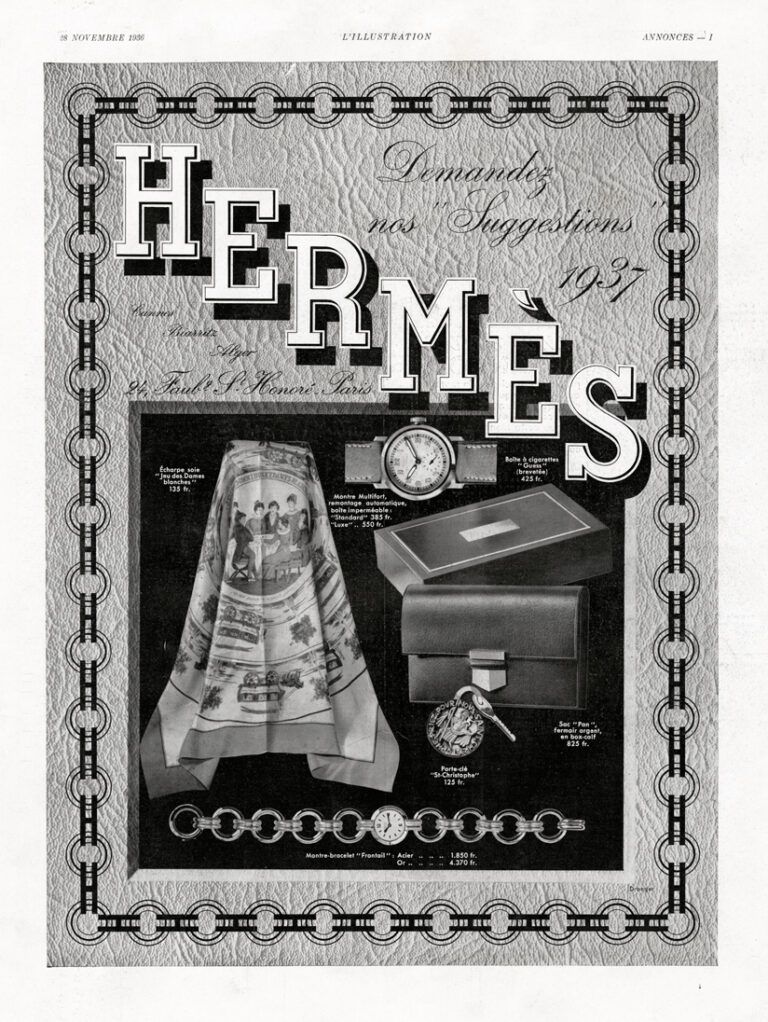The story of Hermès dates back to 1837 when Thierry Hermès established a small harness workshop in the heart of Paris. Specializing in crafting high-quality harnesses and bridles for the carriage trade, the brand quickly gained recognition for its meticulous craftsmanship and dedication to excellence. As horse-drawn carriages gave way to automobiles, Hermès adapted and expanded its offerings, setting the stage for its evolution into a purveyor of luxury goods.

Charles-Émile Hermès started his reign in 1880, where he would embark on expanding retail products globally and development of the Haut à Courroies bag, paving the way for future iconic bags. Adolphe and Émile-Maurice took over the company in the early 1910s. Émile-Maurice gained exclusive rights to a new fashion break-through known at the time as fermeture Hermès or the zipper.
In 1924 the brand opened its first store outside of Paris in the United States. The following year designer Lola Prusac was hired, who would go on to design the first women’s collection in 1929. Over the next decade, the brand would create some it most iconic original goods, with the launch of the “Sac à dépêches” in 1935, which would later be known as the “Kelly Bag”
November 30, 2024 8:10 pm
One of the most iconic creations in Hermès’ history is the silk scarf. Introduced in 1937, the scarf quickly became a symbol of luxury and refinement. Renowned for its intricate designs, vibrant colors, and meticulous craftsmanship, the Hermès scarf transcended its utilitarian origins to become a coveted accessory and a canvas for collaborations with renowned artists like Salvador Dalí and Henri Matisse.

November 30, 2024 8:10 pm
Robert Dumas-Hermès took over the company after his father’s passing in 1951. During his reign, the previously designed Sac à dépêches would become a status symbol when movie star Grace Kelly was photographed carrying the bag to cover her pregnant belly from the press. Robert would also create the famous horse and carriage logo which is still used today.
In 1967 the brand launched its first women’s ready-to-wear line under designer Catherine Karolyi, a French stylist with Hungarian roots, helmed the women’s wardrobe, crafting both apparel and accessories, including the iconic H buckle. Starting in 1978, Jean-Louis Dumas, the son of Robert Dumas, initiated a gradual transformation of Hermès. With a visionary spirit and a keen interest in diverse cultures, he expanded and globalized the brand. After completing the buyer-training program at Bloomingdale’s, the renowned New York department store, he entered the family business in 1964. Assuming the role of chairman at Hermès in 1978, he focused the company’s efforts on silk, leather goods, and ready-to-wear, blending traditional methods with innovative product ranges.
November 30, 2024 8:10 pm
Pierre-Alexis Dumas, a sixth-generation family member and the son of Jean-Louis, assumed the position of artistic director at Hermès. Under his leadership, creativity flourished across various domains, merging innovation with imagination. Hermès expanded its array of expertise, debuting its first Haute Bijouterie collection in 2010 to complement its jewelry line. The following year, the brand ventured into home furnishing fabrics and wallpapers for the first time, extending its influence into interior design. Hermès Horizons crafted exclusive and tailor-made pieces, while the collaboration with Apple resulted in the groundbreaking Apple Watch Hermès, marking a daring and innovative partnership established in 2015.
November 30, 2024 8:10 pm
Named Executive Chairman in 2013, Axel Dumas, the nephew of Jean-Louis Dumas, has propelled the dynamic expansion of the group. This was marked by the unveiling of the fifth Maison Hermès in Shanghai in 2014 and the establishment of numerous stores worldwide. Axel Dumas has also spearheaded the group’s digital strategy, highlighted by the 2017 redesign of the hermes.com website. Embracing the new technological landscape, he has steered Hermès into the digital age, meeting the evolving demands of increasingly connected customers.
November 30, 2024 8:10 pm







Leave a Reply